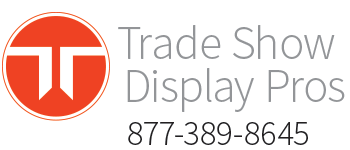Trade shows are exciting business opportunities you don’t want to miss!
Exhibiting at a trade show helps to raise your brand’s visibility, demonstrate your products and services, generate leads, and build long-lasting customer relationships that turn into profits. But trade shows can be expensive. It requires booking the venue, buying retractable banners, distributing free merchandise and pamphlets, and paying for booth attendees.
While several costs are apparent, most business owners fail to factor in the hidden costs. This post discusses the top seven hidden costs of trade shows to help you better plan for an upcoming exhibition without overshooting your budget.
#1: Furniture and Seating
Your booth should feel welcoming and provide potential customers a comfortable space to sit and discuss with your employees. When setting up a booth, you’ll have to factor in the costs of renting tables, chairs, counters, literary racks, cabinets, and other furniture. If budget allows, you can set up an informal lounge area or martini bar to create a welcoming and relaxing ambiance for event attendees.
#2: Drayage
Also known as material handling, drayage refers to moving your trade show items and other related shipments from the delivery truck to your booth in the convention center. It’s a non-negotiable cost and depends on the weight of the materials you ship to the convention center. The show’s organizers provide the drayage services through union workers, and you’ll have to bear the costs.
#3: Carpeting
Most convention centers require exhibitors to use booth carpets so that banner stands and furniture do not damage the floors. You will need to have carpeting and the right padding beneath it. Though it’s an added cost, carpeting and other flooring materials create an inviting tone for your booth. They also provide support and comfort to your staff, who’ll be on their feet for much of the day.
#4: Lead Retrieval Device
You can use a physical lead retrieval device to gather the contact details of event attendees and build your business database of potential leads. Alternatively, you can use a digital mobile app to collect customer information, such as names and contact numbers.
#5: Giveaways and Promotional Items
Hosting a giveaway or distributing promotional items are excellent ways to drive traffic to your booth. Attendees are likelier to stop at your booth if you give them something fun and useful. Brightly colored items like light-up pens, branded caps, and bottles are popular and help increase your brand reach. That said, promotional items that attract the audience are expensive, and you must allocate a specific portion of your budget for your giveaway.
#6: Cleaning and Trash Removal
Trade shows usually run for two to three days or even longer. Every day, you must ensure your booth is as clean as possible to attract attendees. You can hire booth cleaners to provide vacuuming and trash removal services. Check with the show’s organizers about hiring cleaning services and the fees for it.
#7: Hotel and Travel Costs
When planning the budget for an upcoming trade show, factor in all booth staff’s travel and accommodation costs. Consider the air or train fare and local car hiring costs when exhibiting in distant cities and towns. Often, the show’s organizers recommend nearby lodgings at affordable rates.
While trade shows are an effective way to promote your business, they can be expensive. Consider all the associated costs while preparing the budget.
